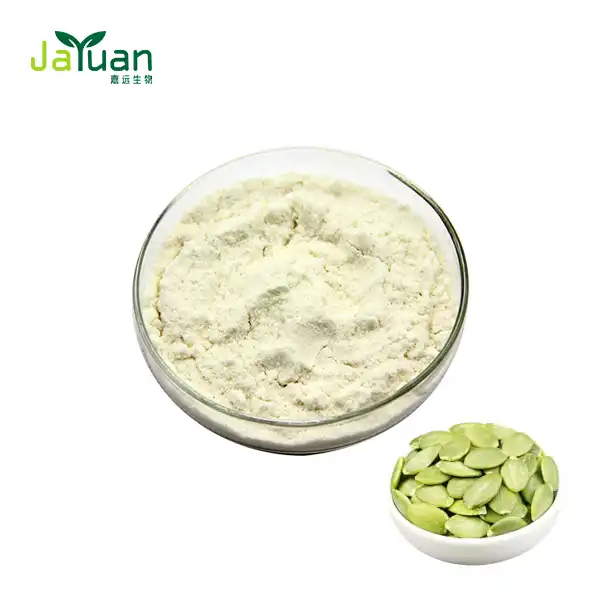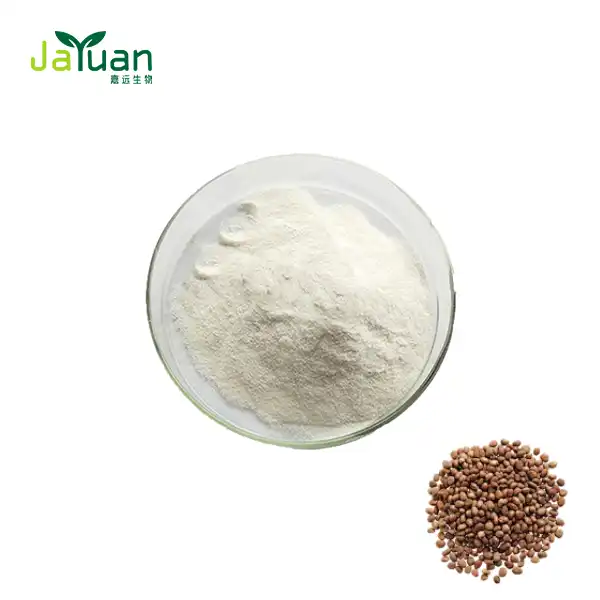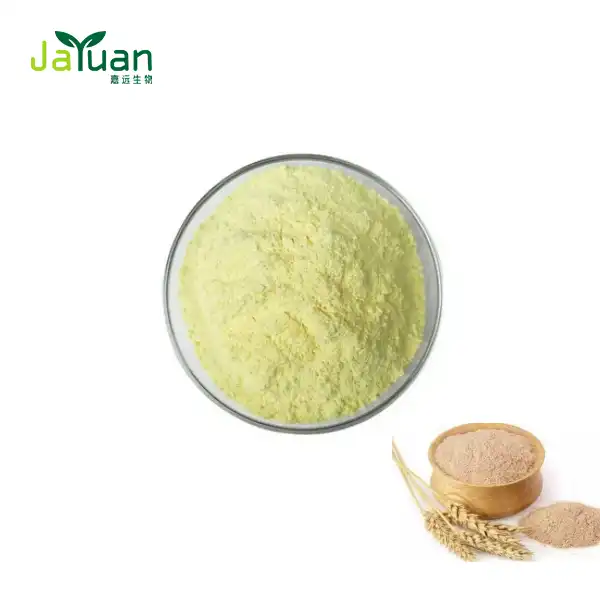How does Neohesperidin Dihydrochalcone compare to other sweeteners?
In the world of sweeteners, Neohesperidin Dihydrochalcone (NHDC) stands out as a unique and intriguing option. As consumers become more health-conscious and seek alternatives to traditional sugar, understanding the characteristics of various sweeteners becomes crucial. This article delves into how NHDC compares to other sweeteners, exploring its sweetness profile, calorie content, and consumer perceptions.

What Sets Neohesperidin Dihydrochalcone Apart in Terms of Sweetness?
Neohesperidin Dihydrochalcone, often referred to as NHDC, is a semi-synthetic sweetener derived from citrus fruits. Its sweetness profile is quite remarkable, setting it apart from many other sweeteners on the market.
NHDC boasts an impressive sweetness potency, estimated to be anywhere from 1,000 to 1,800 times sweeter than sucrose (table sugar). This extraordinary level of sweetness means that only minute quantities of NHDC are needed to achieve the same sweetening effect as larger amounts of sugar. In comparison, popular artificial sweeteners like aspartame and sucralose are about 200 and 600 times sweeter than sugar, respectively.
The sweetness of NHDC is not just intense; it also has a unique flavor profile. Unlike some artificial sweeteners that may have a metallic or bitter aftertaste, NHDC is known for its clean, long-lasting sweetness. This prolonged sweetness can be advantageous in certain applications, particularly in products where a lingering sweet taste is desirable.
Another distinguishing feature of NHDC is its synergistic effect when combined with other sweeteners. When used in conjunction with sweeteners like aspartame or acesulfame potassium, NHDC can enhance their sweetness and improve the overall taste profile of the product. This synergistic property makes NHDC a valuable tool in creating complex sweetener blends that can closely mimic the taste of sugar while reducing overall calorie content.
NHDC also exhibits excellent stability under various processing conditions. It remains stable at high temperatures and in acidic environments, making it suitable for use in a wide range of food and beverage applications. This stability is superior to some other natural sweeteners like stevia, which can break down under certain processing conditions.
However, it's worth noting that the sweetness onset of NHDC is slightly slower compared to sugar. While sugar provides an immediate sweetness upon consumption, the perception of sweetness from NHDC may take a moment to develop fully on the palate. This characteristic can be both an advantage and a challenge depending on the specific application.
How Does the Calorie Content of Neohesperidin Dihydrochalcone Compare?
One of the most significant advantages of Neohesperidin Dihydrochalcone is its calorie content - or rather, its lack thereof. NHDC is classified as a non-nutritive sweetener, meaning it provides negligible calories.
In contrast to sugar, which contains 4 calories per gram, NHDC effectively contributes zero calories to the diet when used in typical amounts. This calorie-free nature is shared by many artificial sweeteners like aspartame, sucralose, and acesulfame potassium, making NHDC an attractive option for those looking to reduce their calorie intake without sacrificing sweetness.
When compared to natural low-calorie sweeteners, NHDC still holds its ground. Stevia, another popular natural sweetener, is also calorie-free. However, sugar alcohols like xylitol or erythritol, while lower in calories than sugar, still contain some calories (about 2.4 and 0.2 calories per gram, respectively).
The calorie-free nature of NHDC becomes particularly advantageous when considering its high sweetness potency. Because such small amounts are needed to achieve the desired level of sweetness, the risk of consuming excess calories from the sweetener itself is virtually eliminated.
This characteristic makes NHDC an excellent choice for formulating low-calorie or calorie-free products. It allows food manufacturers to significantly reduce the calorie content of their products without compromising on taste. This is particularly valuable in the creation of diet sodas, low-calorie desserts, and sugar-free confectionery items.
Moreover, the calorie-free nature of NHDC can be beneficial for individuals managing certain health conditions. For people with diabetes or those following a ketogenic diet, NHDC provides a way to enjoy sweet flavors without impacting blood sugar levels or disrupting ketosis.
It's important to note, however, that while NHDC itself doesn't contribute calories, it's often used in combination with other ingredients that may contain calories. Therefore, consumers should always check the overall nutritional content of products sweetened with NHDC, rather than assuming they are entirely calorie-free.

What Are Consumer Perceptions of Neohesperidin Dihydrochalcone Compared to Other Sweet Options?
Consumer perceptions of sweeteners can significantly impact their adoption and use in food products. When it comes to Neohesperidin Dihydrochalcone, consumer awareness and perceptions are still evolving.
One of the primary advantages of NHDC in terms of consumer perception is its natural origin. Derived from citrus fruits, NHDC can be positioned as a more natural alternative to fully synthetic sweeteners. This aligns well with the growing consumer demand for natural and clean label ingredients.
However, the term "semi-synthetic" might give some consumers pause. Unlike completely natural sweeteners like stevia or monk fruit extract, NHDC undergoes chemical modification during production. This may lead to mixed perceptions among consumers who are seeking the most natural options available.
Compared to artificial sweeteners like aspartame or sucralose, NHDC generally enjoys a more positive perception. There have been fewer controversies or health concerns raised about Neohesperidin Dihydrochalcone Powder, which can make it more appealing to health-conscious consumers.
The taste profile of NHDC is generally well-received by consumers. Its clean sweetness without significant off-flavors is often preferred over some other high-intensity sweeteners that may have bitter or metallic aftertastes. This can lead to higher consumer acceptance in products where NHDC is used.
One potential drawback in consumer perception is the relative unfamiliarity of NHDC compared to more established sweeteners. While ingredients like stevia and sucralose have become household names, NHDC is less known to the average consumer. This lack of familiarity might lead to some initial hesitation or skepticism.
From a health perspective, NHDC is generally perceived as safe. It has been approved for use by regulatory bodies in many countries, which can help alleviate consumer concerns about its safety. However, as with any food additive, some consumers may prefer to avoid it simply because it's not a traditional ingredient they're familiar with.
The calorie-free nature of NHDC is likely to be viewed positively by consumers looking to manage their weight or reduce sugar intake. This aligns with broader trends towards health and wellness in food choices.
It's worth noting that consumer perceptions can vary significantly based on geographical and cultural factors. In some regions where NHDC has been used more extensively or for a longer period, consumer acceptance may be higher.
As awareness of NHDC grows, and as more products incorporating this sweetener enter the market, consumer perceptions are likely to evolve. Education about the origin, safety, and benefits of NHDC will play a crucial role in shaping these perceptions moving forward.
Conclusion
In conclusion, Neohesperidin Dihydrochalcone offers a unique profile among sweeteners. Its high sweetness potency, calorie-free nature, and natural origin make it an attractive option for food manufacturers and health-conscious consumers alike. While it may not be as well-known as some other sweeteners, its characteristics position it as a valuable tool in the ongoing effort to reduce sugar consumption while maintaining the sweet flavors that consumers enjoy.
If you're interested in learning more about Neohesperidin Dihydrochalcone Powder or other high-quality sweetener products, please don't hesitate to reach out to us at sales@jayuanbio.com. Our team of experts is ready to answer your questions and help you find the perfect sweetening solution for your needs.
References
- DuBois, G. E., & Prakash, I. (2012). Non-caloric sweeteners, sweetness modulators, and sweetener enhancers. Annual Review of Food Science and Technology, 3, 353-380.
- Mortensen, A. (2006). Sweeteners permitted in the European Union: safety aspects. Scandinavian Journal of Food and Nutrition, 50(3), 104-116.
- Gerwig, G. J., & Vliegenthart, J. F. G. (2017). Structural analysis of neohesperidin dihydrochalcone. Carbohydrate Research, 449, 18-28.
- Kroger, M., Meister, K., & Kava, R. (2006). Low‐calorie Sweeteners and Other Sugar Substitutes: A Review of the Safety Issues. Comprehensive Reviews in Food Science and Food Safety, 5(2), 35-47.
- Carocho, M., Morales, P., & Ferreira, I. C. (2017). Sweeteners as food additives in the XXI century: A review of what is known, and what is to come. Food and Chemical Toxicology, 107, 302-317.
- Nabors, L. O. (Ed.). (2016). Alternative sweeteners. CRC Press.








